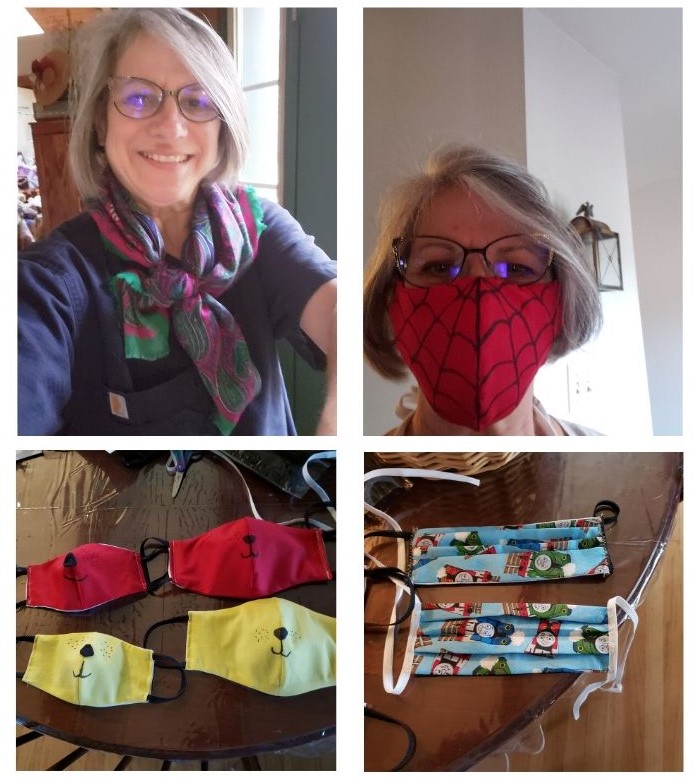12 ways to help kids be OK with medical masks
May 6, 2020
By Angie Rice and Bernie Hershey
Now that masks are being worn to prevent the spread of COVID-19, parents are scrambling to help their children be comfortable around people with masks on. A child younger than 4 years old or one with autism relies on seeing specific parts of the face to recognize someone they know, like a parent. Often, it’s the face they focus on to read expression and emotion. Put a mask on, and it’s different. And maybe a little frightening.
If you’re coming to Schreiber or another appointment with medical professionals, you can download a social story from Autism Little Learners, and you can check out the ideas we have collected here to help you and your child manage the possible anxiety.
- Make masks fun. Play games with them, like Peek a Boo. Use a favorite toy or stuffed animal and have them wear a mask. Have them play with masks in the mirror. Counting is calming: Set a timer and see who can leave their mask on the longest.
- Routines are important, too. Matter-of-fact statements such as, “Now we all wear our masks when we go outside for a walk!”
- Allow the children to customize or “design” the mask. Giving them control over the look of the mask can help reduce their anxiety.
- Make videos. Record everyone in your family wearing their mask so that when the child becomes scared or anxious again you can replay the video to remind them.
- Use specific masks for Mom and Dad. That way a child can associate those masks with those people. Personalize the mask with a decoration or even a cologne or aftershave to add another identifying sensation.
- Pretend the mask gives you special super hero powers. Superheroes from Batman and Spiderman to Teenage Mutant Ninja Turtles wear masks. Show them pictures or videos to remind them.
- Tap into their interests. If they like Thomas the Tank Engine, draw his simple face or even writing the word “Thomas” on their mask will trigger the association with this famous series. Thomas faces can be downloaded on line as well. “Paw Patrol” and” PJ Masks” cartoon characters are easy associations with masks, too.
- Connect to their favorite sports stars. Use the idea that sports stars often wear mouth guards or helmets as their protection. “Would Carson Wentz play in the Super Bowl without his helmet? No! He wears protection on his face, and you can, too! So right now, we wear our mask for protection to keep us from getting sick.”
- Make it an animal mask. Use a marker to draw simple animal faces and they can pretend they’re a kitty cat or a sloth.
- Use a favorite book. Books can be a real comfort to young children, so look for the stories they enjoy to make their mask. “Pete the Cat,” “The Very Hungry Caterpillar” and “Where the Wild Things Are” could all inspire a fun mask.
- Use a calming essential oil. Wearing masks so close to the nose can feel claustrophobic and create anxiety. Ninette Jackson, an aromatherapist who owns Josiah’s Oils in Lancaster, has been selling at-cost masks with a pocket for essential oils. She recommends “Kids Calm”, her blend. Oils made with spearmint, lavender and sweet citrus fruits can provide a calming effect.
- Play with the masks on. Teach them that when your eyes have little wrinkles at the corners and your eyebrows raise up you are smiling behind the mask. Talk to them how their face muscles feel when their expressions change. Have them pretend to be angry or sad or surprised and ask them how their eyes change. This can be part of playing in the mirror, too.
Angie Rice and Bernie Hershey are occupational therapists at Schreiber. For more information, contact them at arice@schreiberpediatric.org or bhershey@schreiberpediatric.org.